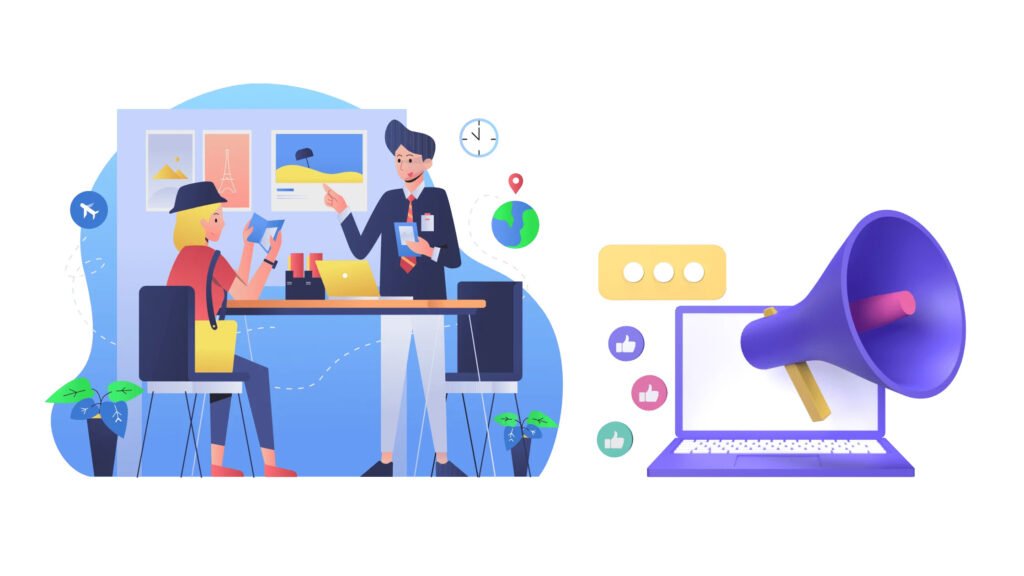More Than Pixels on a Screen
Great design doesn’t just catch the eye — it solves problems, moves minds, and drives action. Behind every intuitive app, high-converting website, or engaging brand experience is often the quiet work of a digital design agency. These agencies don’t simply make things look good. They create digital ecosystems that blend form, function, and purpose.
This is the story of how a single creative agency evolved from freelancers assembling websites to becoming a strategic design partner helping brands shape identity, interaction, and user trust across platforms.
What a Digital Design Agency Actually Does
At its core, a digital design agency builds experiences. While many confuse it with traditional graphic design, digital design goes far beyond visuals. It includes:
-
UI and UX design for websites and applications
-
Brand systems development
-
Product interface design
-
Design audits for conversion optimization
-
Responsive design across devices
-
Design collaboration with development teams
These agencies operate where aesthetics meet functionality. The goal is to ensure every touchpoint — be it a button, a scroll, or a transition — supports both the brand story and the user’s journey.
How the Journey Began
One such agency began with just three designers in a shared workspace. They focused on building websites for local shops and startups, often managing everything from color palettes to uploading content themselves. But over time, they saw recurring client problems:
-
Websites that looked great but didn’t convert
-
Apps with complex interfaces that confused users
-
Brands with inconsistent design across channels
-
Slow response to user feedback in digital products
This marked a turning point. The agency shifted its vision from delivering creative services to becoming a process-driven partner focused on long-term user impact.
Redefining Design With Strategy
The first major shift came in mindset. Instead of beginning with visuals, the agency started each project by asking:
-
Who are the users?
-
What problems need solving?
-
Where does design fit in the user’s path?
-
How does this design scale across platforms?
This research-first approach helped move from decoration to digital function. Clients started noticing higher engagement, longer site visits, and better lead quality.
The Pillars of Modern Digital Design
Every successful digital design agency today structures its work around five key pillars:
1. User-Centered Research
Before pixels are placed, a design team dives deep into:
-
Target user demographics
-
Behavior patterns
-
Competitive analysis
-
Conversion drop-off points
Designs aren’t created in isolation — they’re shaped around what users need, want, and expect.
2. UX Architecture
User experience is mapped through:
-
Wireframes
-
Customer journey flows
-
Navigation structure
-
Accessibility requirements
This sets the foundation for intuitive, goal-oriented digital spaces.
3. Visual Identity
A strong identity builds trust. The agency refines:
-
Logo systems
-
Typography hierarchies
-
Color psychology in UI
-
Animation and micro-interactions
Everything aligns with the brand message but remains fluid across devices.
4. Interaction Design
The agency introduced dynamic interface patterns such as:
-
Hover-triggered tooltips
-
Scroll-based storytelling
-
Progress indicators and visual feedback
-
Smart menu systems for mobile devices
These elements improved usability without cluttering the screen.
5. Developer Collaboration
Designs only work when implemented correctly. That’s why the agency began embedding designers into client dev teams, ensuring:
-
Clean handoff files
-
Component-based design systems
-
Responsive design standards
-
Testing in real devices before launch
This minimized back-and-forth and preserved design integrity.
Real Results from Refined Design
After restructuring its services, the agency helped clients:
-
Increase eCommerce checkout conversion by 28%
-
Lower app onboarding drop-off by 40%
-
Reduce website bounce rates from 70% to 42%
-
Improve accessibility scores across platforms
Design no longer sat on the sidelines — it became a business function.
Projects That Made a Difference
The agency’s portfolio transformed in quality and impact. Some standout examples:
Healthcare Appointment App
-
Simplified booking process
-
Visual indicators for appointment types
-
Readable fonts for older users
-
Scaled to both mobile and web
Outcome: Appointment rate increased by 35%, with positive feedback from first-time users.
B2B SaaS Dashboard
-
Role-based layout customization
-
Color-coded data visualization
-
Drag-and-drop reporting tools
Outcome: Client churn reduced by 22% as customers found features easier to navigate.
Direct-to-Consumer eCommerce Site
-
Interactive product previews
-
Single-page checkout design
-
Mobile-first performance optimization
Outcome: Cart abandonment dropped, and mobile sales surpassed desktop for the first time.
Tools That Power Today’s Digital Design
The agency adopted a flexible tech stack, depending on the project:
-
Figma for collaboration and design systems
-
Webflow for visual-first site development
-
InVision for prototyping
-
Adobe After Effects for motion
-
LottieFiles for lightweight animations
-
Notion for project transparency
These tools helped speed up delivery while keeping teams aligned in real time.
How Clients Changed Their Perception of Design
Initially, many clients viewed design as decoration. But after seeing data-backed results, their expectations evolved. They began asking:
-
Can we test this layout version?
-
Should we shorten this user flow?
-
Is this icon clear across age groups?
Design became a shared language — not a black box.
The Future of Digital Design Agencies
Looking ahead, digital design is becoming more:
-
Inclusive – Accessible interfaces for all user abilities
-
Data-informed – A/B testing baked into design decisions
-
Modular – Design systems over one-off pages
-
Interactive – Real-time feedback loops from users
A future-ready digital design agency must blend creative thinking with measurable outcomes. Beauty without clarity will not survive.
Why This Journey Matters
The journey from simple visuals to full-scale user experience design wasn’t quick or easy. But it mattered. It turned clients into collaborators, campaigns into conversions, and ideas into platforms that users actually enjoy using.
For any business looking to make real impact online, design isn’t an afterthought. It’s the first step — and a reliable digital design agency can guide the way.





